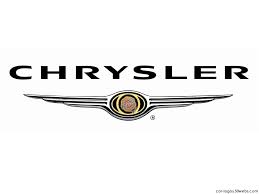PT Cruiser L4-2.4L Turbo VIN 8 (2005)

Hydraulic Control Assembly - Antilock Brakes: Description and Operation
Hydraulic Control Unit (HCU)
MK20E
HYDRAULIC CONTROL UNIT (HCU)
DESCRIPTION - MK20E
On early production vehicles equipped with the MK20e ABS, the hydraulic control unit (HCU) is mounted to the CAB as part of the ICU. The HCU
controls the flow of brake fluid to the brakes using a series of valves and accumulators. A pump/motor is mounted on the HCU to supply build
pressure to the brakes during an ABS stop.
VALVES AND SOLENOIDS
The valve block contains four inlet valves and four outlet solenoid valves. The inlet valves are springloaded in the open position and the outlet valves
are spring-loaded in the closed position during normal braking. The fluid is allowed to flow from the master cylinder to the wheel brakes.
During an ABS stop, these valves cycle to maintain the proper slip ratio for each wheel. The inlet valve closes preventing further pressure increase and
the outlet valve opens to provide a path from the wheel brake to the HCU accumulators and pump/motor. This releases (decays) pressure from the
wheel brake, thus releasing the wheel from excessive slippage. Once the wheel is no longer slipping, the outlet valve is closed and the inlet valve is
opened to reapply (build) pressure.
If the ABS includes the traction control feature, there are four other valves in the HCU. Two traction control (TC) valves, mounted in the HCU valve
block, are normally in the open position and close only when the traction control is applied. There are also two shuttle valves which control pressure
return to the master cylinder under ABS and traction control conditions.
These TC valves are used to isolate the rear (nondriving) wheels of the vehicle from the hydraulic pressure that the HCU pump/motor is sending to the
front (driving) wheels when traction control is being applied. The rear brakes need to be isolated from the master cylinder when traction control is
being applied so the rear wheels do not drag.
BRAKE FLUID ACCUMULATORS
There are two fluid accumulators in the HCU: one for the primary hydraulic circuit, and one for the secondary hydraulic circuit. Each hydraulic circuit
uses a 3 cc accumulator.
The fluid accumulators temporarily store brake fluid that is removed from the wheel brakes during an ABS cycle. This stored fluid is used by the
pump/ motor to provide build pressure for the brake hydraulic system. When the antilock stop is complete, the accumulators are drained by the
pump/motor.
There are two noise dampening chambers in the HCU on this vehicle equipped with traction control.
PUMP/MOTOR
There are two pump assemblies in the HCU: one for the primary hydraulic circuit, and one for the secondary hydraulic circuit. Both pumps are driven
by a common electric motor. This DC-type motor is integral to the HCU and is controlled by the CAB.
The pump/motor provides the extra amount of brake fluid needed during antilock braking. Brake fluid is released to the accumulators when the outlet
valve is opened during an antilock stop. The pump mechanism consists of two opposing pistons operated by an eccentric camshaft. In operation, these
pistons are used to purge fluid from the accumulators back into the master cylinder circuits. When the antilock stop is complete, the pump/motor
drains the accumulators.
The pump motor is also used to build pressure when the system goes into traction control mode.
The CAB may turn on the pump/motor when an antilock stop is detected. The pump/motor continues to run during the antilock stop and is turned off
after the stop is complete. Under some conditions, the pump/motor runs to drain the accumulators during the next drive-off.
The pump/motor is not a serviceable item; if it requires replacement, the HCU must be replaced.
OPERATION - HYDRAULIC CIRCUITS AND VALVES
NOTE: The following applies for both MK20e and MK25e ABS.
The hydraulic fluid control valves within the HCU control the flow of pressurized brake fluid to the wheel brakes during the different modes of ABS
braking and traction control. The following paragraphs explain how this works. For purposes of explanation only, the following diagrams show only
one hydraulic circuit, the Right Front wheel braking circuit.
